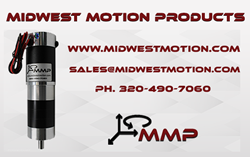Misalignment with suppliers is often caused by existing replenishment policies such as min/max order policy.
Discrete Manufacturers: Special Considerations for Robotics and Demand-Driven Supply Chain Solutions
Thomas R. Cutler | TR Cutler, Inc.
According to Pam Bednar, VP at Synchrono, misalignment is often a key challenge for discrete manufacturers. “Aligning the materials support function with demand is key. Many manufacturers still perform planning and scheduling processes far away from actual orders and from execution on the shop floor. That’s how suppliers can be divorced from almost every aspect of the business that they are supplying.”
While robot-to-person solutions are on a rapid trajectory for 2017 and beyond, discrete manufacturers initiating material replenishment automation programs without properly analyzing processes and priorities find far less value than anticipated.
Manufacturers are unsure about current replenishment capabilities within ERP (enterprise resource planning) and other systems, and are even less clear whether to fix, buy, or build a solution to gain the capabilities needed. Too often disruptions in leadership and a change-averse environment creates barriers to improved production flow and automating processes.
The manufacturing sector is well-served when considering whether a replenishment solution can enhance flow and enable continuous improvements; often best practice robotic solutions follow.
.png)
©2016 Synchrono
Misalignment with suppliers is often caused by existing replenishment policies such as min/max order policy. When it was first devised, min-max was a brilliant solution and much better than what was used before. For min/max to work, one makes several significant assumptions about demand, production, shipping costs, aggregation, and holding costs. Many of these assumptions about the true cost of inventory have been proven false. As a result of this change, and based on increased customer pressures for on-time delivery, min/max policies very often decouple suppliers from real demand. Instead of replenishing close to the actual demand signal, the signals are accumulated and then released “in batch” to the supplier.
Bednar noted, “This creates a bullwhip effect in the supply chain, leaving vendors in alternating and very unpredictable modes of too much demand and too little supply.”
eKanban eliminates this misalignment by recoupling suppliers with demand and giving them a view into manufacturing and true demand patterns. Supplier alignment needs to be an active process with continuous focus and support from discrete manufacturers.
The calculation of total cost of ownership in robotics and automation drives metrics and algorithms that are still fresh and untested. Thankfully, the TCO determination of SaaS-based solutions deliver more value over time because internal resources need only support configuration and training. The software vendor takes on everything else, including the traditional resource drain of items such as hosting services, backup and recovery, upgrades, and hardware. It is easier to create and sustain training processes and continuous improvements for an eKanban system. Finally, companies with SaaS-based solutions become business-process experts based on the clients helped.
Once introduced, these subject-matter experts help clarify goals and outline a pragmatic path towards achieving them. Whether using VSM (value stream mapping) or other methodologies, C-level executives create a conscientious deliberation to best-practice options, associated costs, and business needs.
Like any automation process, discrete manufacturers are able to reach a conclusion that effectively supports the unique existing business challenges. The right solution can provide both operational efficiency and competitive advantage.
Engaging Shop Floor Labor
When it comes to discrete manufacturers current processes, the people feeling the most pain are often on the production floor. Conversations with these team members are vital to ensure complete engagement. Automation software partners need to get out on the manufacturing floor and gauge demand profiles for each type of customer. They also need to engage shop floor personnel in identifying opportunities to improve system rollout and effectiveness.
Bednar reported, “Many manufacturers are pleasantly surprised with the positive response on the shop floor. They relate that these employees, rather than being change-averse, were engaged and energized when they had more clarity and autonomy on the job. Turnover was less of a problem as well, because employees were empowered with easy-to-use systems that supported their activities and processes.”
Discrete manufacturers embrace robotics with DDSC
Upsetting the status quo is inherent to any lean process, particularly among discrete and engineer-to-order (ETO) manufacturers. It is often daunting to switch from acceptable (but definitely not optimal) Push processes to Pull-based eKanban systems. Bednar insists that, “Sustaining an internal communications program not only sells the automated real-time system, but keeps energies up for the team and fosters a positive tone for those who are most affected by the change.”
Receptivity and acceptance of new technologies, whether robotic or real-time demand-driven supply chain (DDSC) management, are dramatically improved as the bottom-line and ROI are rapidly realized.

About Thomas R. Cutler
Thomas R. Cutler is the President & CEO of Fort Lauderdale, Florida-based, TR Cutler, Inc., (www.trcutlerinc.com) Cutler is the founder of the Manufacturing Media Consortium including more than 6000 journalists, editors, and economists writing about trends in manufacturing, industry, material handling, and process improvement. Cutler authors more than 500 feature articles annually regarding the manufacturing sector and is the most published freelance industrial journalist worldwide. Cutler can be contacted at trcutler@trcutlerinc.com and can be followed on Twitter @ThomasRCutler.
The content & opinions in this article are the author’s and do not necessarily represent the views of RoboticsTomorrow
Featured Product

